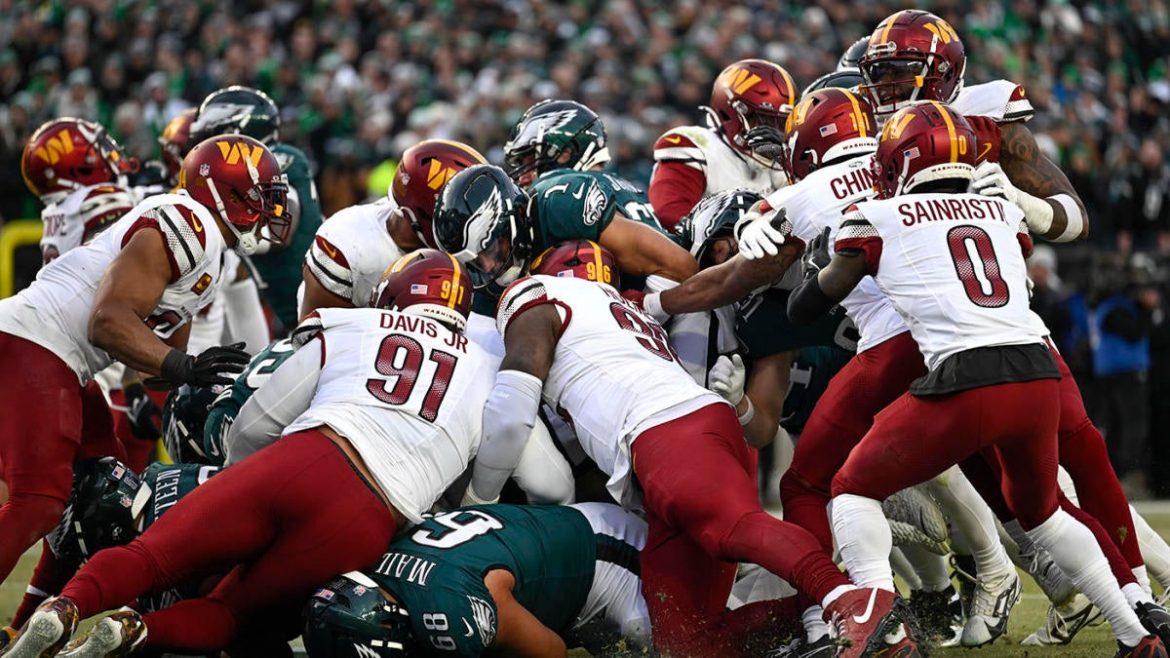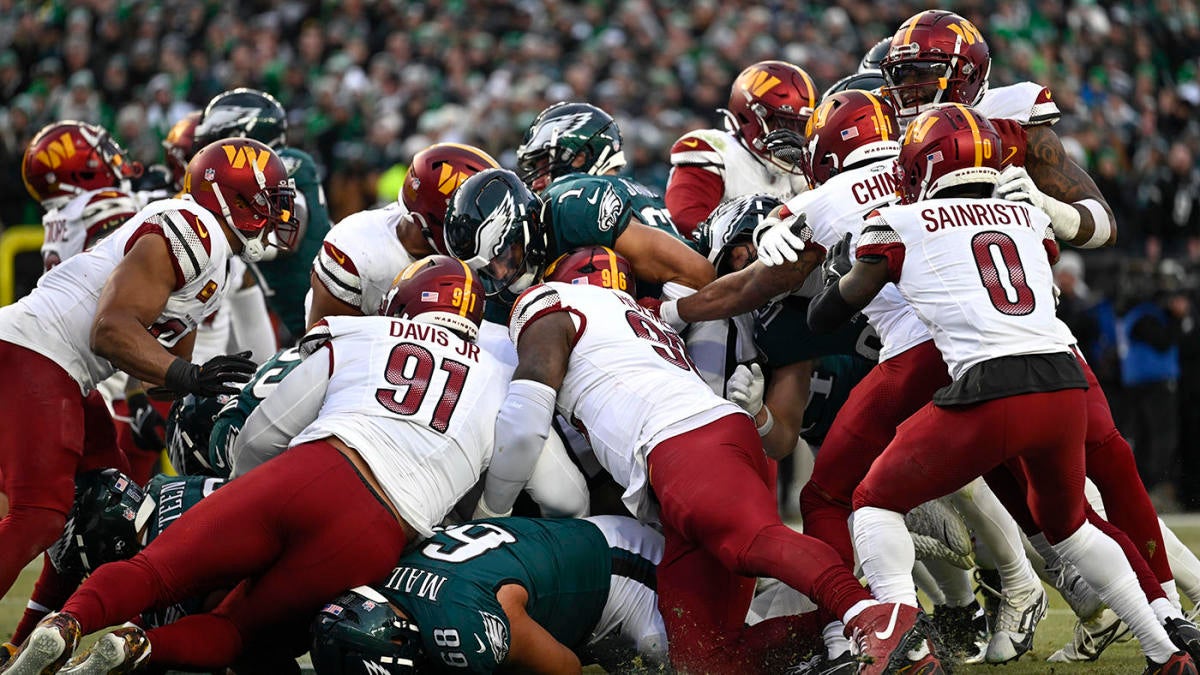The Controversy Surrounding the Philadelphia Eagles’ “Tush Push” Play: Analysis and Implications
Introduction: A Play That Has Divided Opinions
In the recent NFC Championship Game between the Philadelphia Eagles and Washington Commanders, a specific play known as the “Tush Push” again drew significant attention and controversy. The “Tush Push,” a goal-line quarterback sneak augmented by teammates pushing the runner forward from behind, secured crucial yardage for the Eagles but left defenders—and many observers—questioning its legitimacy and fairness. Commanders linebacker Frankie Luvu vocalized his frustration, labeling the play a “cheepo play” and calling for its ban. This incident reignites a broader debate about whether such tactics align with the spirit and competitive integrity of football.
Understanding the “Tush Push” and Its Impact
The “Tush Push” is essentially a variant of the quarterback sneak where the quarterback, typically Jalen Hurts for the Eagles, is physically pushed by teammates from behind, helping him advance through dense defensive lines in critical short-yardage situations. This formation is highly effective at or near the goal line—where inches can determine scoring drives—and has become a signature play for the Eagles.
During the NFC Championship, the Washington Commanders attempted to counter this maneuver by aggressively timing the snap, resulting in multiple encroachment penalties. Frankie Luvu was flagged three consecutive times for offsides as he sought to disrupt the “Tush Push.” Despite these efforts, the Eagles converted on a fourth down with this very play, increasing their commanding lead.
The controversy largely stems from perceptions that the play diminishes defensive skill. Luvu’s characterization as a “cheapo play” reflects a viewpoint held by some players and analysts that the maneuver relies more on brute force and rules exploitation than athletic prowess or strategic ingenuity. This sentiment is echoed by Packers president Mark Murphy, who also publicly favors banning the play, arguing it “involves no skill” and approximates an “automatic first down” in such goal-line scenarios.
Defensive Challenges and Tactical Implications
From a defensive standpoint, the “Tush Push” creates a uniquely frustrating problem. Traditional defensive tactics focus on penetrating the offensive line, hand fighting, tackling, and reading the play. The assistance the quarterback receives from teammates physically pushing him changes this dynamic, making it extremely difficult for defenders to single-handedly stop the advance.
The Commanders’ repeated offsides penalties highlight the desperation and challenge of defending against it. Their attempts to jump the snap and draw penalties—essentially engaging in mental warfare or trying to disrupt timing—were notable but ultimately unsuccessful. Officials even warned the Commanders that persistent infractions could result in the referee awarding a touchdown without an actual score, underscoring how the play placed defenders in a bind.
Historical Context and Rule Considerations
The “Tush Push” is not a brand-new tactic; similar formations and goal-line pushes have appeared intermittently throughout football history. However, current NFL rules allow pushing the runner forward from behind, whereas the league had previously prohibited this type of assistance. The rule was relaxed partly due to the difficulty in consistent enforcement by officials.
The controversy posed by this play has led to internal debates within the NFL about its future. Some argue reinstating bans on pushing could restore balance, reinforcing the importance of individual defender skill and reducing scenarios that seem almost automatic in success. Conversely, others defend the play’s legality and see it as a legitimate strategic innovation that adds to the game’s drama.
Player and Analyst Perspectives
Frankie Luvu’s public call for banning the play is significant as it comes from a frontline defender who bore the brunt of trying to stop it during a high-stakes game. His labeling of the play as “cheepo” resonates with a larger group of players and fans frustrated with tactics perceived as undermining the spirit of play.
On the other side, proponents argue that every team seeks to exploit rules within their allowances to gain advantage, making innovation a natural part of competitive sport. The “Tush Push” is defended as a clever use of teamwork and power football at critical moments, not dissimilar to other game-winning adaptations across NFL history.
Broader Implications for the NFL
The persistence and efficacy of the “Tush Push” have compelled the NFL to reconsider whether its rules currently foster a balanced contest between offense and defense. The attention from media, fans, and league executives suggests forthcoming discussions about potential amendments or clarifications.
If banned, teams would need to adjust goal-line strategies significantly, potentially changing offensive schemes and defensive counters substantially. Such a ban might please defenders and traditionalists but could also reduce the strategic diversity that adds to the excitement of the game’s most pivotal moments.
Conclusion: A Debate Reflecting Football’s Evolving Nature
The controversy around the Philadelphia Eagles’ “Tush Push” exemplifies the ongoing tension in professional football between skill and innovation, tradition and evolution. Frankie Luvu’s candid criticism, backed by multiple teams and officials highlighting the play’s impact, underscores the challenges defenses face and prompts reflection on what football should prioritize at its highest level.
Whether the NFL chooses to ban or preserve the “Tush Push,” this debate illuminates how the sport continuously adapts, grappling with the fine line between rule exploitation and competitive fairness. The outcome will not only affect how teams strategize near the goal line but also shape the narrative of how football balances brute strength, skill, and innovation in the years ahead.





